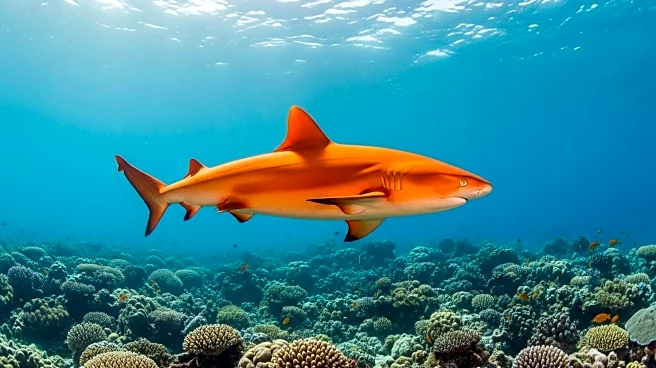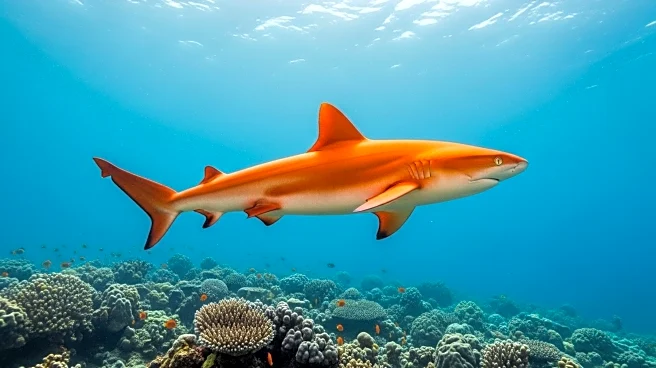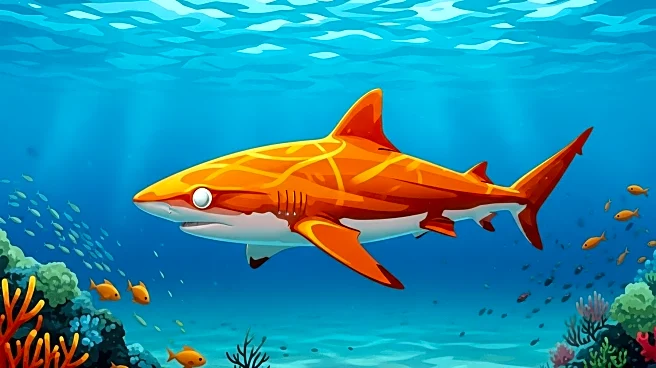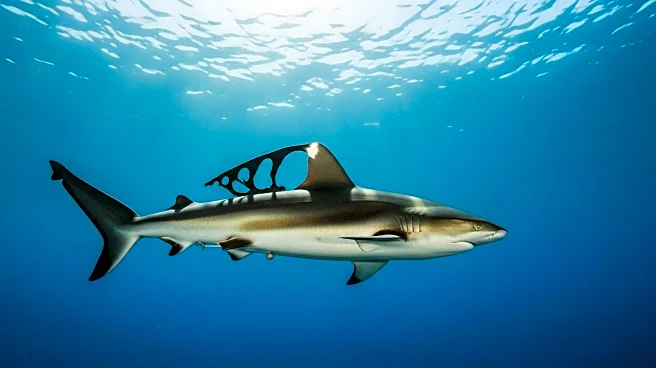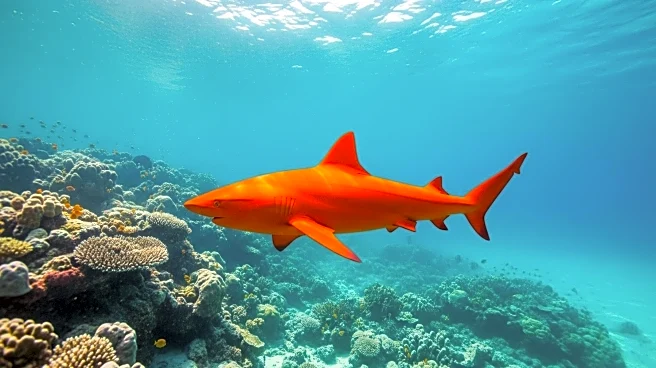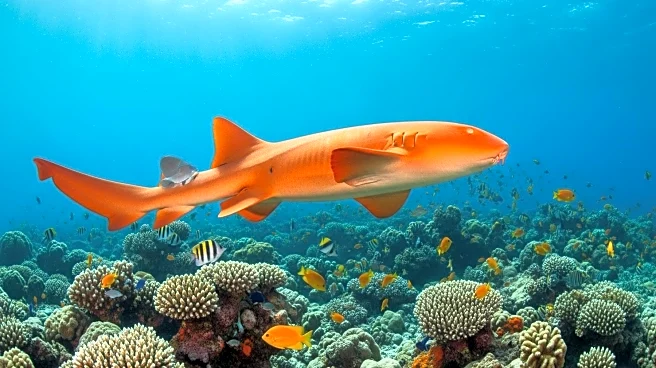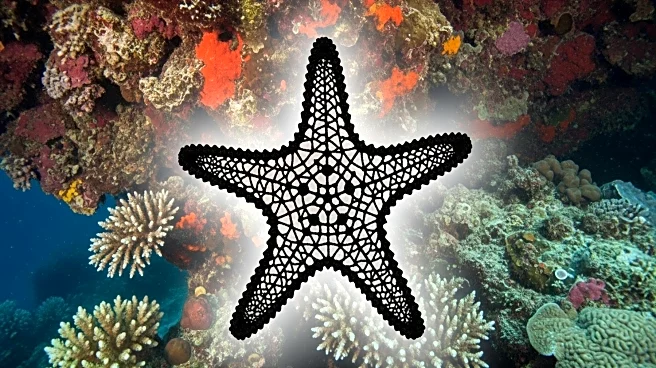What is the story about?
What's Happening?
A fisherman in Costa Rica has caught a rare orange nurse shark, marking the first scientifically documented case of total xanthism in the species. Garvin Watson, the angler, reeled in the 6-foot, 6-inch shark with white eyes and a bright orange body in Tortuguero National Park. The phenomenon, known as xanthism, is a pigmentation condition that results in yellow or golden tones in animals. The shark's unique coloration and white eyes, lacking visible irises, make it an unprecedented find in the Caribbean Sea.
Why It's Important?
The discovery of the orange shark is significant for marine biodiversity research, as it provides new insights into pigmentation conditions in marine species. This rare occurrence highlights the importance of documenting unique marine life and understanding the genetic and environmental factors contributing to such anomalies. The event underscores the need for continued exploration and study of marine ecosystems to uncover and preserve biodiversity.
What's Next?
Researchers will likely continue studying the orange shark to understand the genetic and environmental factors contributing to its unique pigmentation. The event may prompt further exploration of marine biodiversity in the Caribbean Sea, encouraging scientists to document and preserve rare marine species.
Beyond the Headlines
The discovery of the orange shark may lead to increased interest in marine biodiversity and the study of pigmentation conditions. Understanding these phenomena can contribute to broader knowledge of genetic diversity and adaptation in marine species, potentially influencing conservation strategies.
AI Generated Content
Do you find this article useful?
